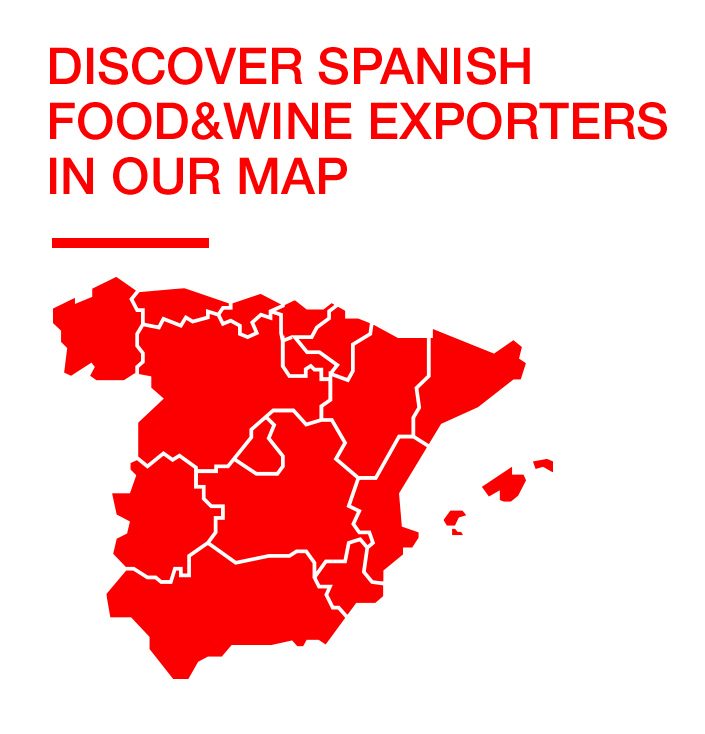.png.transform/rendition-xs/image_image%20(1).png)
Mike DeSimone: "Spain Truly Has It All When it Comes to Wine!"
Interview with Mike DeSimone, a native New Yorker, award-winning journalist and author (of five books and counting). DeSimone has contributed to Wine Enthusiast for over 13 years and was recently announced as the new Spanish wine reviewer for the publication.
How has it been, thus far, being the new Spanish wine reviewer for Wine Enthusiast?
It has been absolutely wonderful. I have been working with Wine Enthusiast first as a freelancer and then as contributing editor and wine reviewer for thirteen years, but tasting wines from Spain is a game-changer for me. Living in Spain for part of the year and having traveled all over the country for the past 20 years, I am familiar with the wine, but as I taste through categories I am learning more and more every day. This also gives me an opportunity not just to score wines and write tasting notes but to write articles introducing our readers to Spanish tourist destinations, wine regions, and styles of wine.
Why is Spain a wine region worth exploring, enjoying and considering as one's favorite?
Spain truly has it all! It offers a wide range of whites and reds across a variety of styles, from fresh and fruity whites to mature and complex reds, and let’s not forget rosé, with the majority at excellent quality to price ratio. If you look at the big three European wine-producing countries—Spain, France and Italy—you will find that in general Spanish wines are extraordinarily well priced as compared to their neighbors.

What made you buy a house in Spain and what do you love most about your location?
When my husband and I discovered Nerja, on the eastern end of the Costa del Sol, we knew that we had found our perfect place. We’re in Malaga province, about 40 minutes from both the capital city, Malaga, and Malaga International Airport. Nerja is a coastal town with seven gorgeous cove beaches. There’s a national park directly behind Nerja, so the town of 20,000 is perfectly positioned between mountains and sea. It has over 100 restaurants and bars that offer traditional Andalucian and Spanish cuisine in addition to many international options. We also love the architecture; a local ordinance prohibits building over three stories, and all the buildings are either white or pale yellow with ceramic tile roofs. It’s the complete opposite of fast-paced, high-rise New York City living!
What are some of your favorite regions in Spain for food and wine?
Can I just say all of them? Seriously, I enjoy Ribera del Duero, where the regional dish is lechazo, grilled baby lamb chops. This is always served with the luscious red wines of the region, made from Tempranillo. In Rioja, especially the capital city of Logroño, we love to go out for a night of tapas, eating small plates alongside a glass of wine. San Sebastian is one of the world’s culinary capitals, said to have more Michelin stars per capita than any other city. And I can’t overlook Malaga, which has long been known for its many traditional seafood restaurants but has definitely upped its game in terms of inventive cuisine in the last couple of years.
Outside of wine, do you have any favorite Spanish products? Olive oils? Meats? Cheese?
Spanish olive oil, especially from Andalucia, is an overlooked delicacy in the United States. When you drive down from Madrid and cross into Jaén Province from La Mancha in the north, the highway is surrounded by an undulating sea of olive tree-covered hills as far as the eye can see. Jaén, Granada, and Malaga provinces are home to hundreds of thousands of olive trees, producing blends and single varietal olive oils like Picual, Arbequina and Lechin, each with its own flavor and characteristics. Spanish cheese offers a lot more than Manchego, with delicacies such as Tetilla, a cows’ milk cheese from Galicia, and Torta del Casar, sheeps’ milk cheese from Extremadura. Torta del Casar is like room temperature fondue: Cut the top off the rind and the delicious and runny cheese is ready to spread! And let’s not forget the pork: In addition to the famed jamón, Iberian pork is the best in the world. I love cuts like secreto or pluma simply grilled with salt, pepper and rosemary.

What's something that most people don't know/consider when thinking of Spanish gastronomy or wine?
While the extraordinary cuisine of Michelin-starred chefs in San Sebastián and Barcelona has received most of the spotlight on Spanish gastronomy in the past decade, Spain has a rich tradition of regional specialties, with dishes that have roots in simple home cooking. Galicia is known for its octopus, pulpo a la Gallega, and for empanada Gallega, which is a full-sized savory tomato and tuna pie with flaky crust. Andalucia is the home of gazpacho (which needs no explanation) and rabo de toro, or braised bull’s tail. We were in the Canary Islands recently and loved that meals are served with salted wrinkled potatoes called papas arrugadas and the local salsas, mojo picón and mojo verde. Segovia is famed for its roast suckling pig, cochinillo, while León is the home of cured beef called cecina. And guess what? Every single one of these places and those I don’t have room to mention have their own regional wine style to pair with the local food!
Spain is one of the most organic wine regions in the world with many regions striving towards a more sustainable future. What are your thoughts on this?
Sustainability encompasses different areas, but one of the most important pillars is eliminating the use of pesticides in the vineyard. Biodiversity in and around vineyards can take care of many pests naturally. Spraying vines with pesticides do not just harm mold, mildew and bugs that may grow on leaves or grapes; it harms every living thing in and around vineyards. A diverse ecosystem is healthier not just for the vines and grapes themselves but for those of us who drink the wine. Encouraging owls to thrive in vineyards is a natural way to eliminate rodents that may eat grapes or damage vines while having bats nearby can help to do away with insects that damage grape leaves. Water use must be considered as well. Water that is first utilized to wash and rinse tanks and equipment during harvest and winemaking can be filtered and recycled for other uses, including vine irrigation. Sustainability is extremely important to younger consumers, but beyond that, for the industry to survive in Spain or anywhere deliberate sustainability efforts must be put into place in regions and individual wineries.

When hosting friends or family, which Spanish wines are you picking from your cellar first?
I always like to begin with bubbles, so of course, there is always plenty of chilled Cava on hand to get the party started. If we’re doing a multi-course dinner, we start with lighter food and wine and move towards heavier, so we’ll often pour crisp Albariño from Rias Baixas or fruity Verdejo from Rueda with salads or seafood appetizers. As we move into meat dishes, we move on to Crianza or Reserva Tempranillo from Rioja, Ribera del Duero or Toro. However, for a more casual summer barbecue, we will pop open easy-drinking and accessible Monastrell from Jumilla, which we may serve lightly chilled on a very hot day.
When cooking Spanish cuisine at home, what are some of your favorite dishes and why?
I love Iberian pork, especially cuts like secreto and pluma, although I will also serve tenderloin filets or bone-in chops. Unlike much American pork, which can be dry and lack flavor, Iberian pork is delicious with a good balance of well-marbled fat. It doesn’t need a lot of work—just a hot grill or skillet and a little salt and pepper. We also like to make paella because it becomes social. Everybody gathers in the kitchen to watch, so the party is going long before you sit down at the table. Because I’m not afraid of frying, frito Malagueño is often in rotation, fried calamari, shrimp, and other small fish with strips of red and green pepper and zucchini. This is great to serve family-style on a large platter! And the best part is that there is always a Spanish wine to match. Frito Malagueño is terrific alongside a cold glass of Fino Sherry.
What should more people know about Spain, in general?
For a relatively small country, Spain has a lot to offer. I understand that many tourists with limited time will only have a chance to visit Madrid or Barcelona or do a quick circuit of Andalucía that includes Granada, Sevilla and Cordoba. Spain is a natural paradise offering mountains, beaches, lakes and reservoirs that are perfect for outdoor vacations whether you just want to lounge on a beach chair or love to go hiking and paddle-boarding. The country is rich in history, with picturesque, whitewashed villages, ancient castles, soaring cathedrals, and true stories of kings, queens, and knights. It is also incredibly affordable; hotels, meals and wine are well priced, offering true value for travelers. I will be covering tourism options in Spanish wine regions and cities in my writing for Wine Enthusiast, but in the meantime anyone who is planning to get back out and travel should definitely have Spain on their radar.
Any final words/thoughts you want to share?
I have barely scratched the surface when it comes to Spain. I’ve had a home there since 2004 and there are still many places that I haven’t been to, foods I have not eaten, and wines that I have not drunk. I think that’s a good thing because it means I will never get bored. I encourage anyone who is unfamiliar with Spain to dig in and start experiencing. And for those who already know Spain and Spanish food and wine, keep learning, keep growing, and keep enjoying Spain and its bounty.



